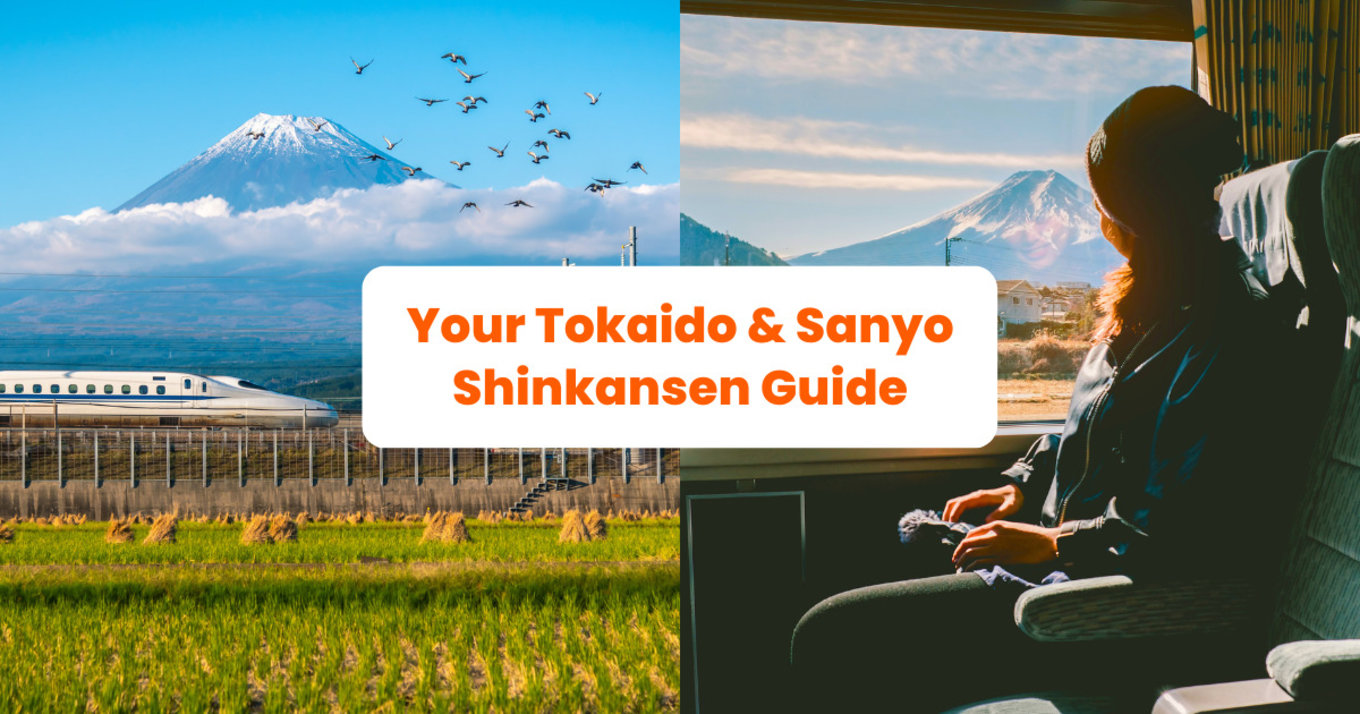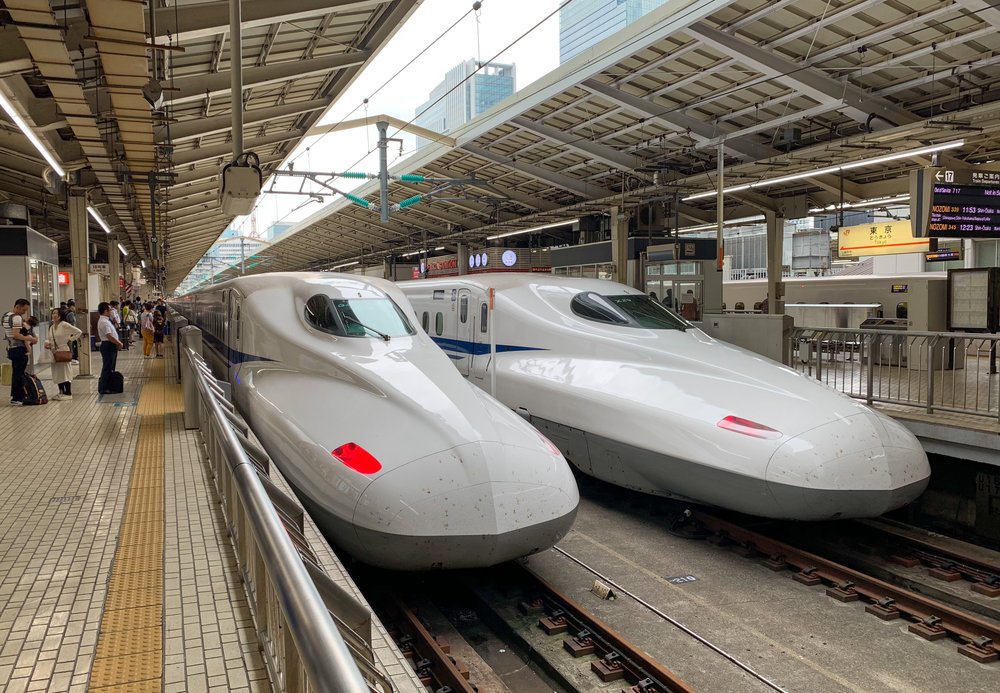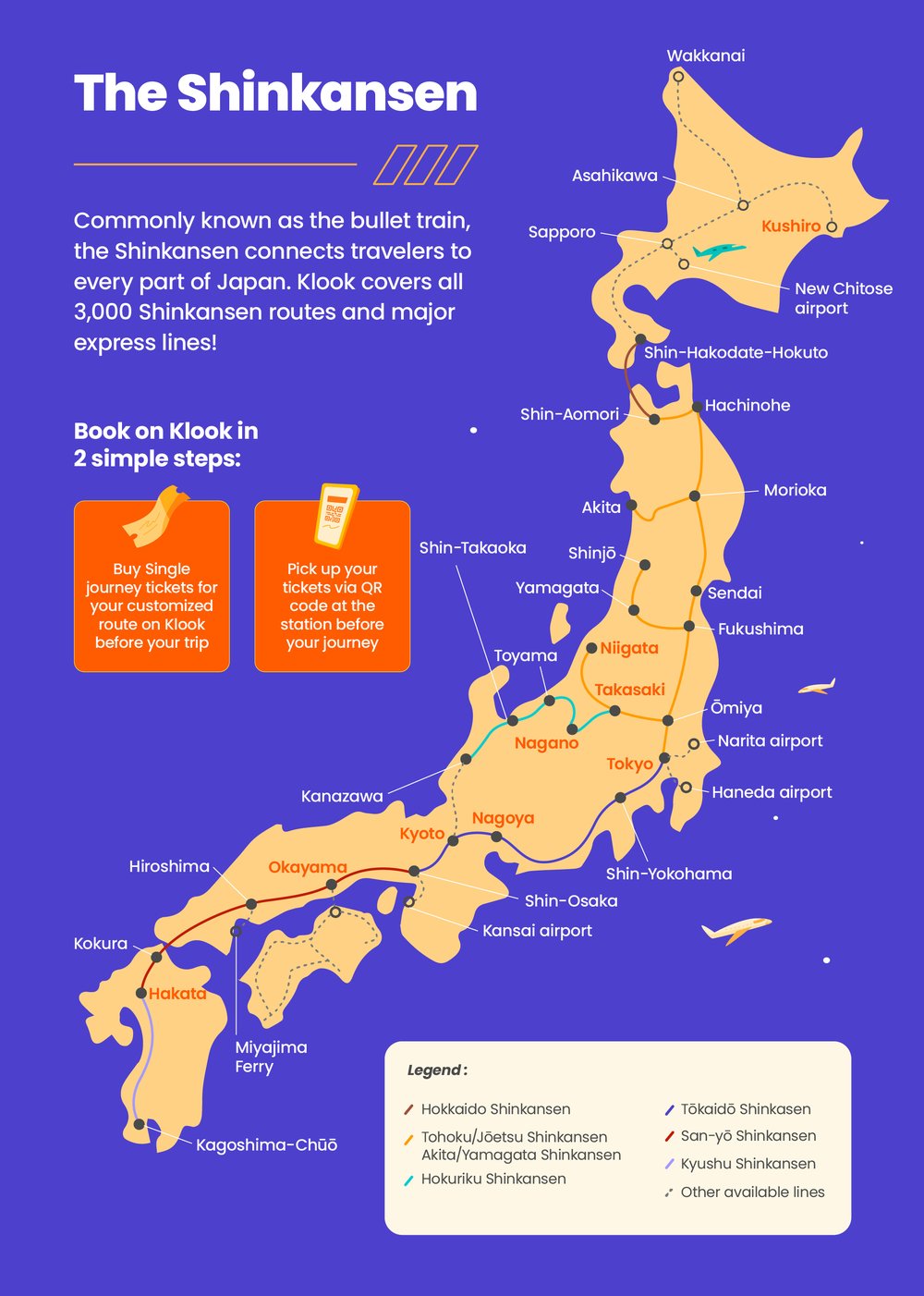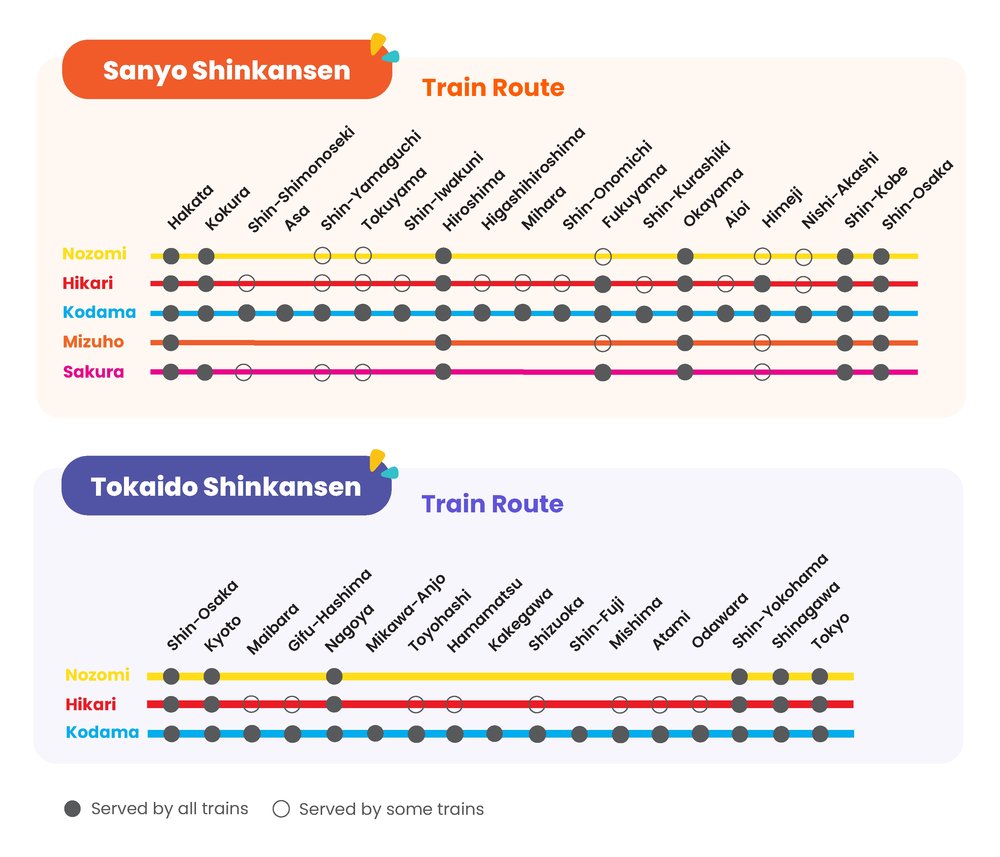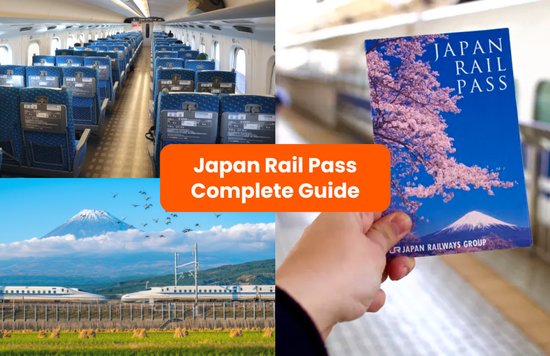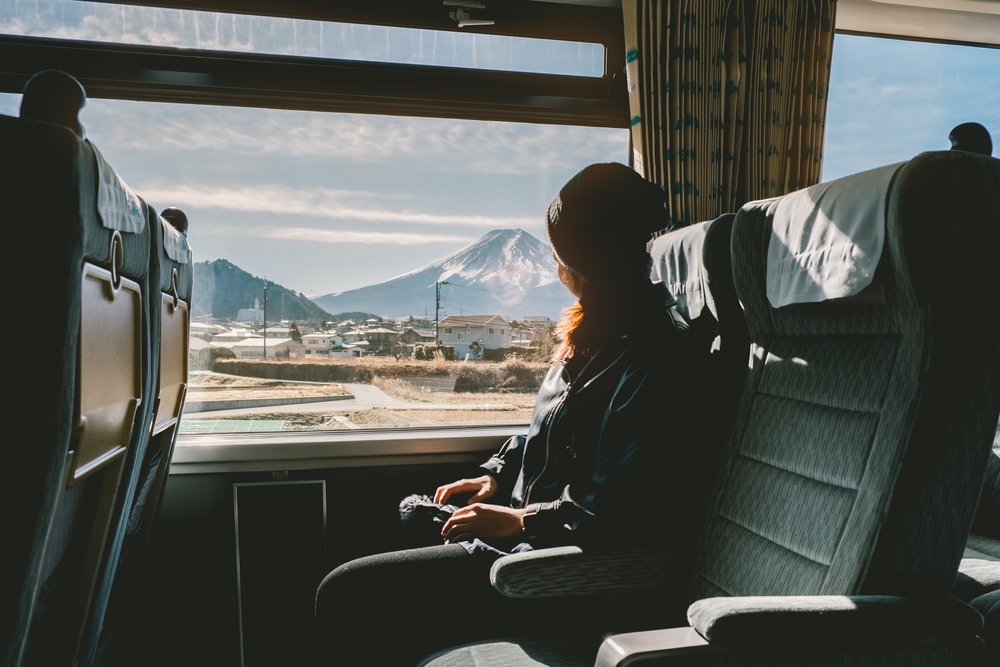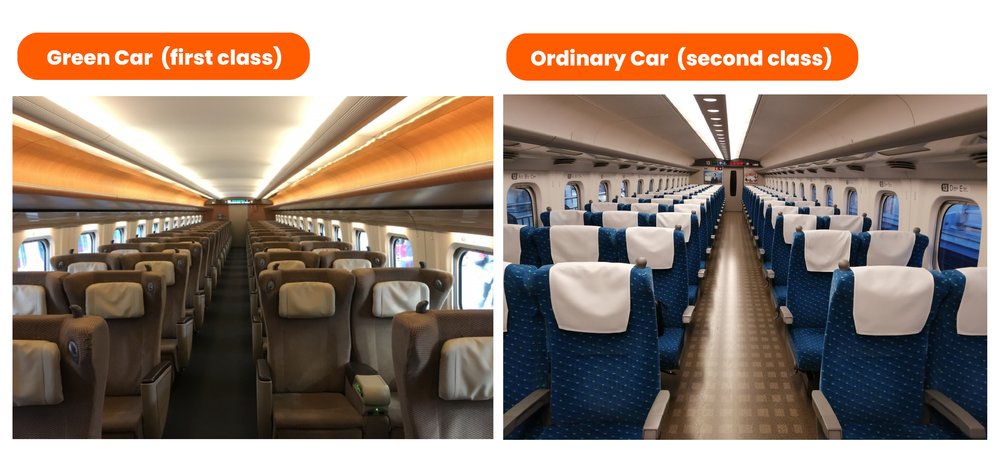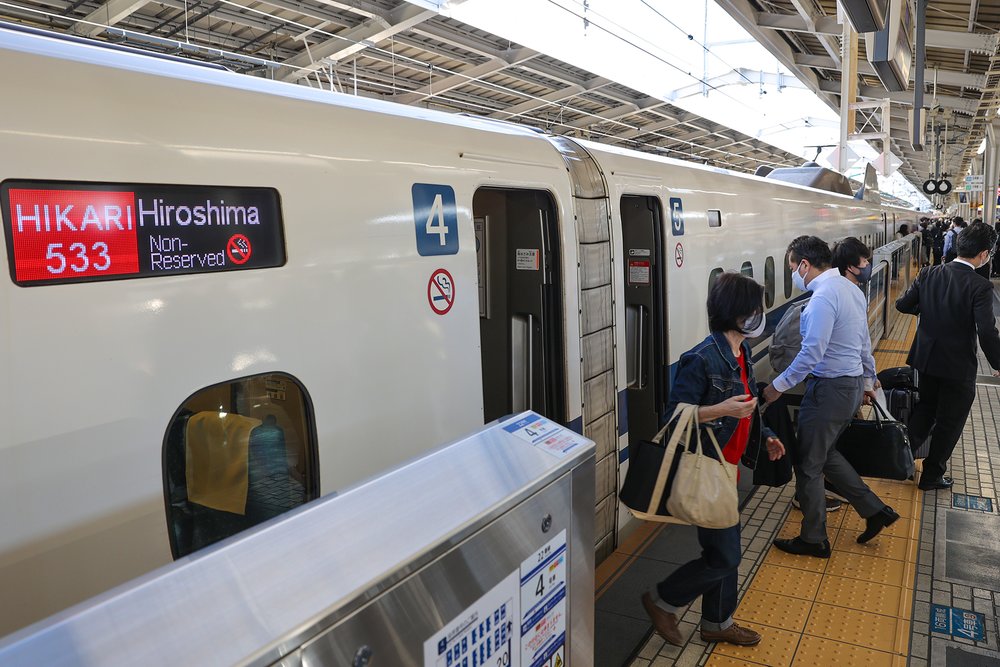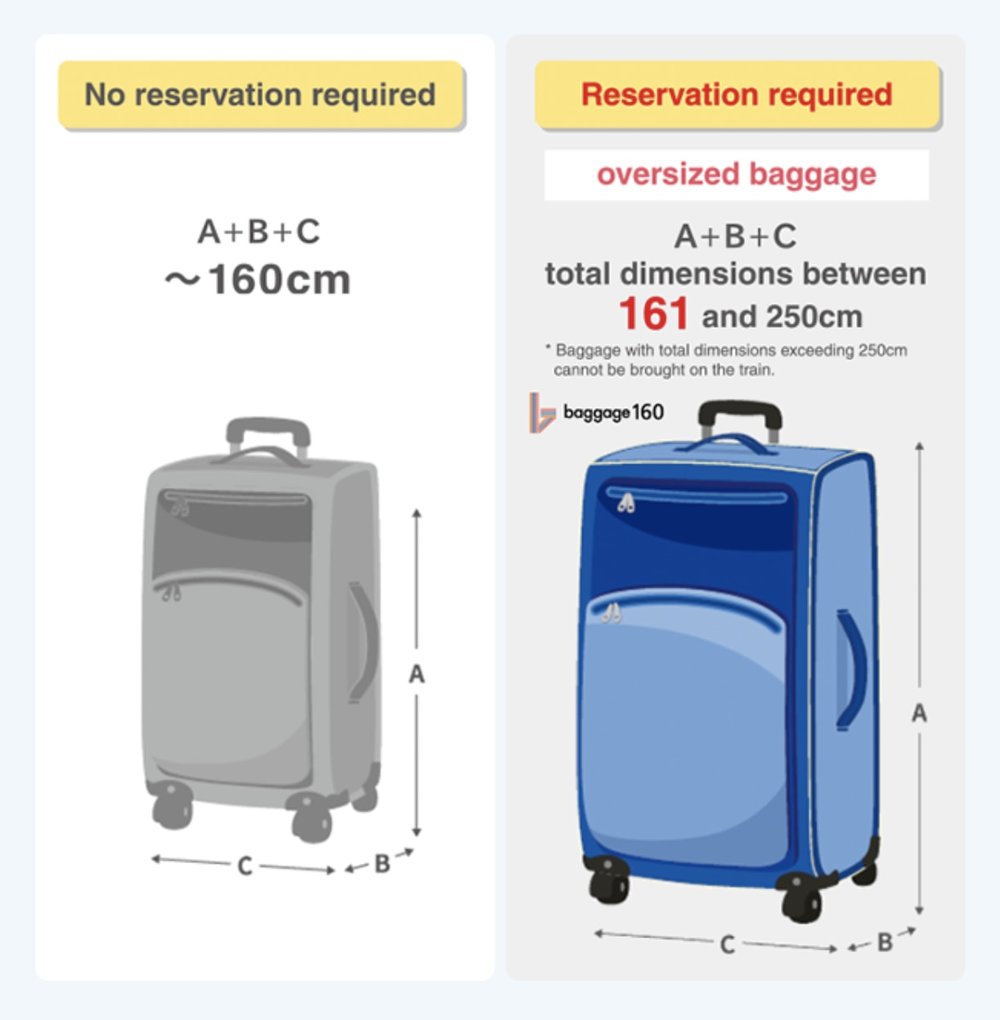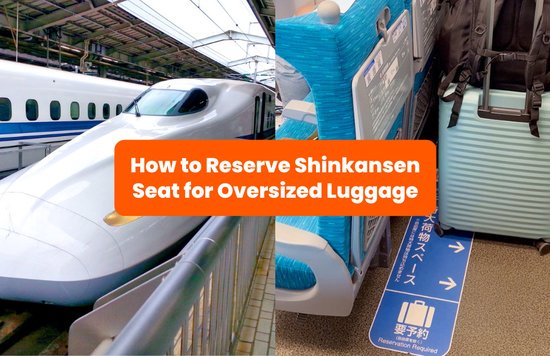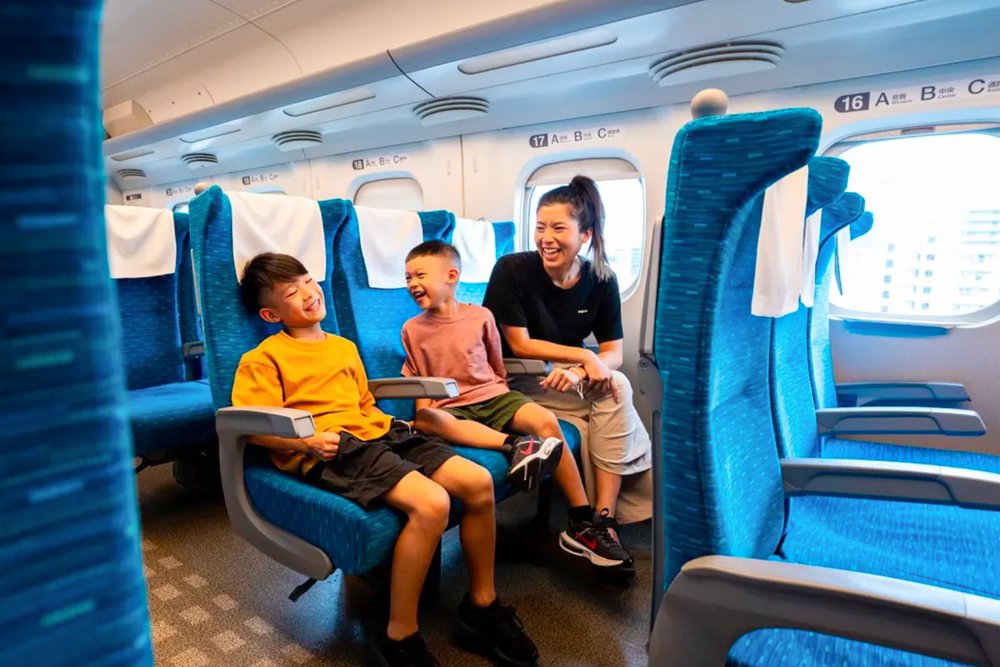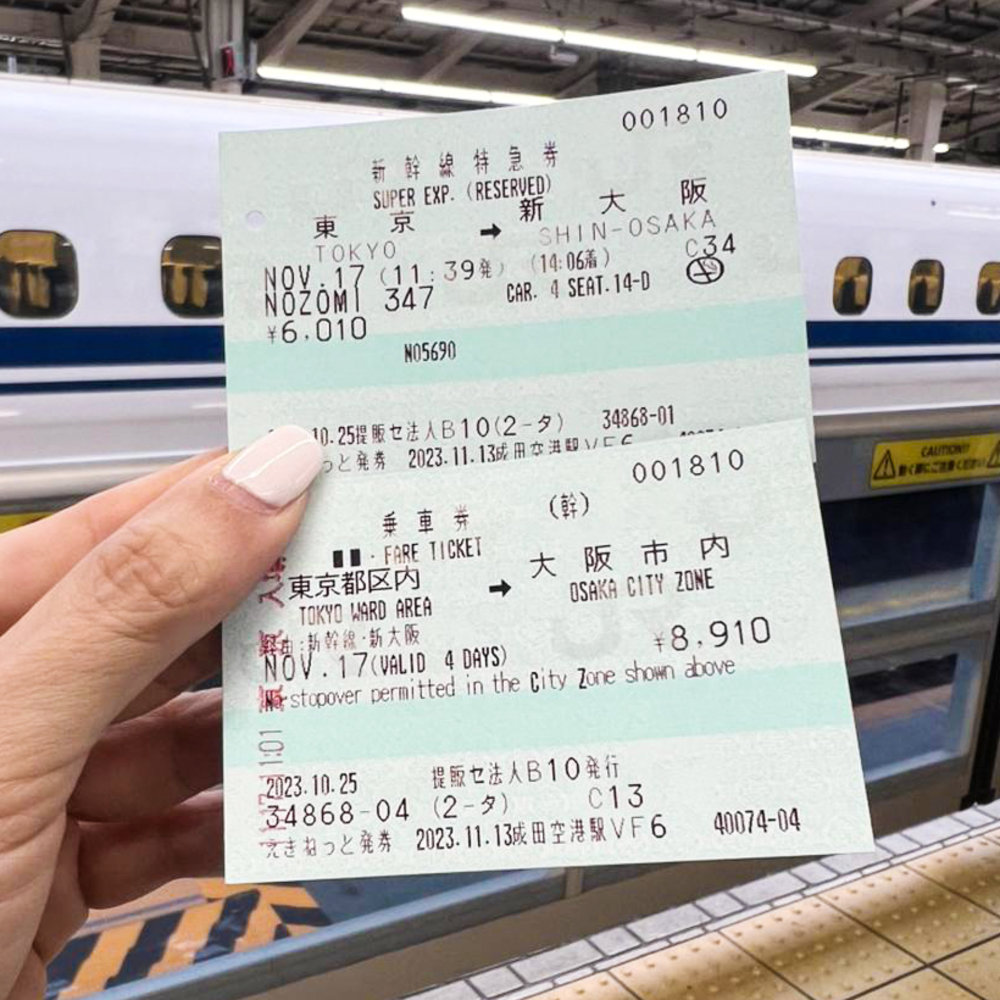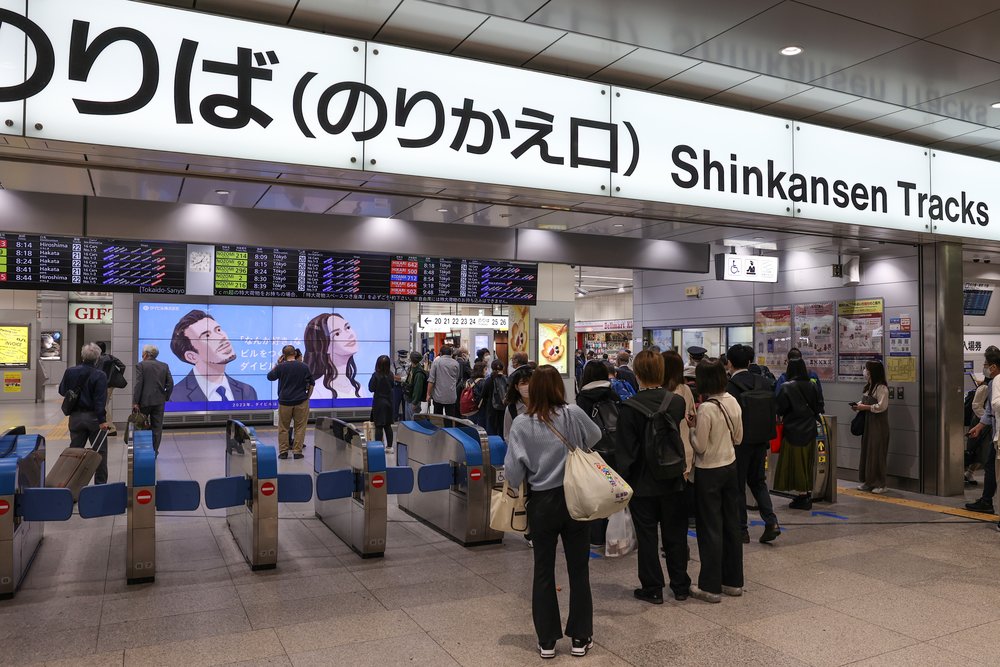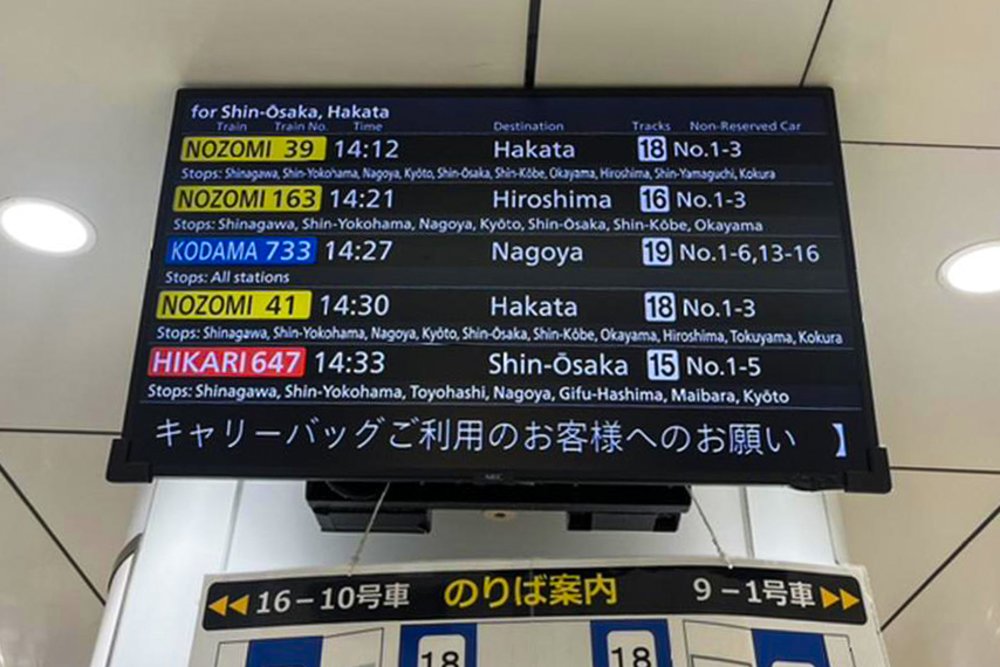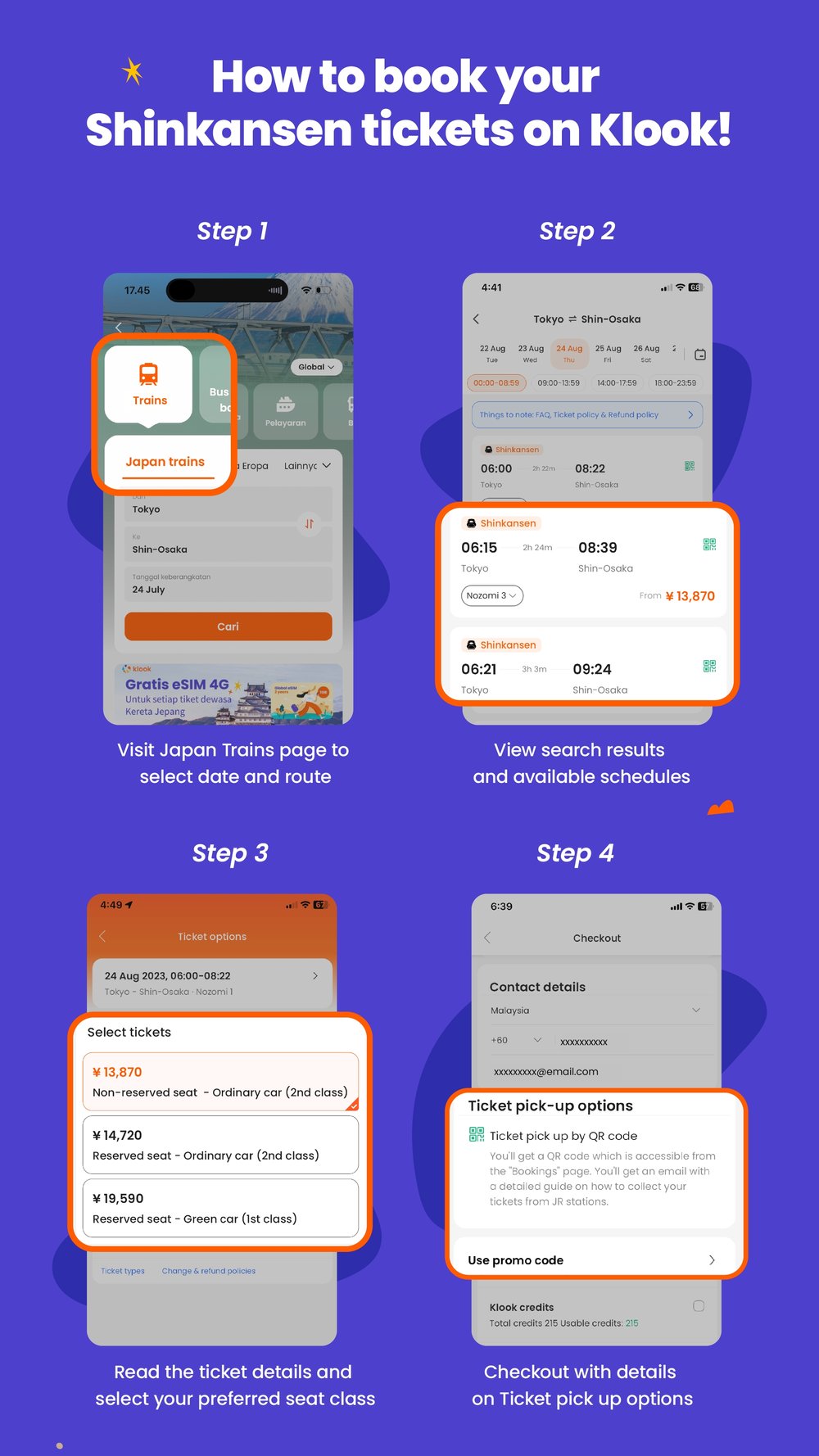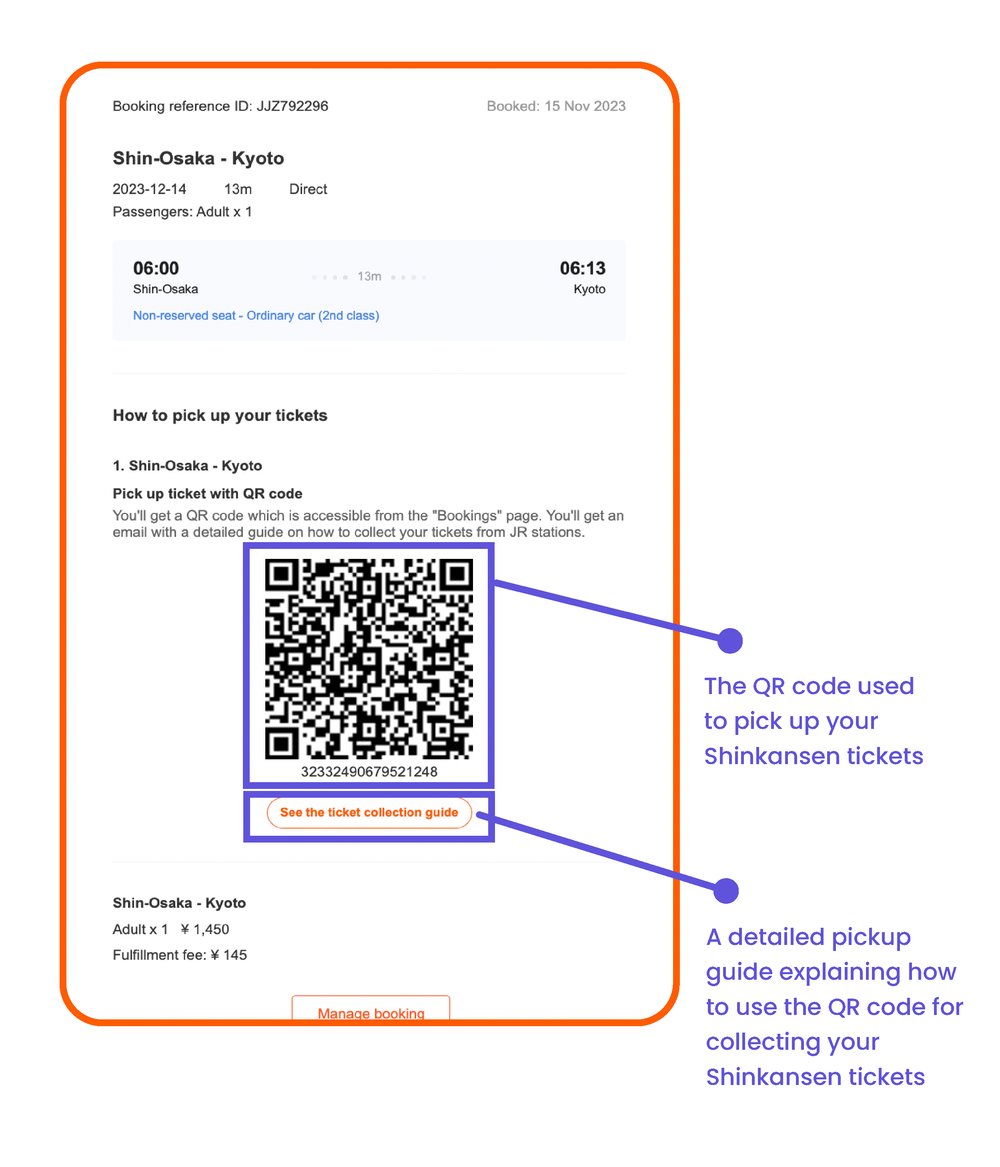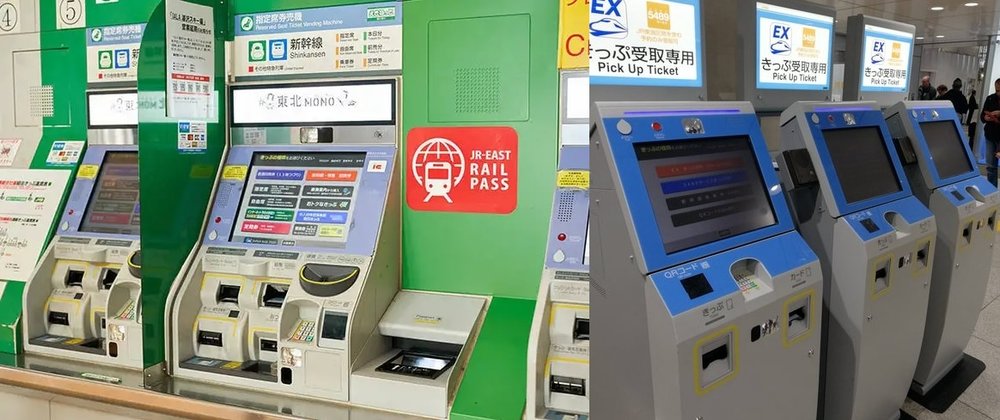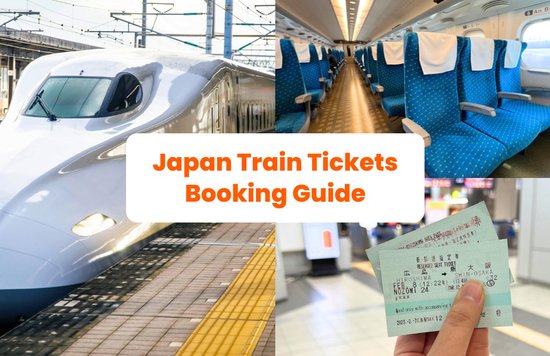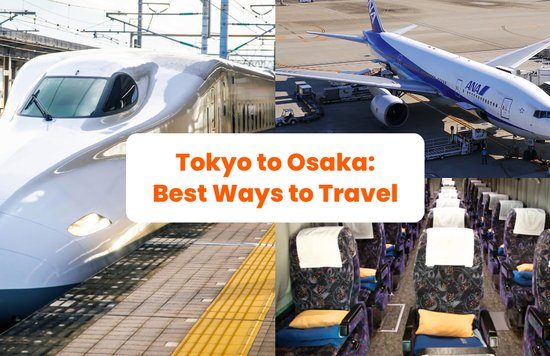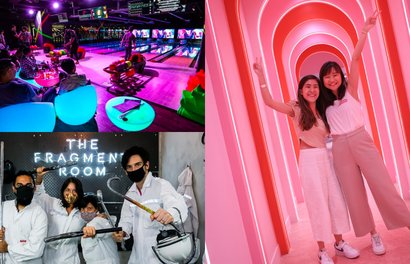Your guide to taking the Tokaido and Sanyo Shinkansen
Imagine gliding through the Japanese countryside at speeds up to 320 km/h (200 mph) while comfortably seated in a state-of-the-art train. The Tokaido and Sanyo Shinkansen lines offer just that experience as Japan’s iconic bullet train system.
Together, they seamlessly link up Tokyo and Fukuoka on a train journey that takes just under 5 hours. The Tokaido Shinkansen covers the journey between Tokyo and Osaka, while the Sanyo Shinkansen extends from Osaka to Fukuoka, providing a vital link between western and southern Japan.
Sit back, relax, and join us on a journey on the Tokaido and Sanyo Shinkansen, where we’ll delve into ticket options, booking procedures, and everything you need to know to enjoy this unforgettable travel experience!
Exploring the Tokaido & Sanyo Shinkansen
The Shinkansen, or bullet train, is a symbol of Japanese innovation and efficiency. With a network that spans the length of the country, these high-speed Japanese bullet trains, including the popular Nozomi and Hikari trains, connect major cities and regions with unparalleled convenience and speed.
To fully appreciate these engineering marvels, we will begin with an overview of the Shinkansen system and subsequently compare the routes and train types of the Tokaido and Sanyo lines.
What is Shinkansen?
The Shinkansen is Japan’s high-speed rail network and is renowned for its punctuality, comfort, safety, and efficiency. The Shinkansen has revolutionized train travel since its debut in 1964. It currently consists of several lines crisscrossing the country, connecting major cities and regions with speeds reaching up to 320 km/h (200 mph).
For travelers looking to explore Japan, the Shinkansen is an essential mode of transportation. With a Shinkansen ticket or Japan Rail Pass, you can gain unrestricted access to Shinkansen high-speed trains, making it a breeze to travel between destinations.
From the northernmost reaches of Hokkaido to the southern tip of Kyushu, the Shinkansen network spans the length of the country, allowing you to explore Japan’s rich cultural history and breathtaking natural beauty in record time.
What is the Tokaido and Sanyo Shinkansen?
The Tokaido Shinkansen was inaugurated in 1964 as the world's first high-speed rail line, linking Tokyo, Nagoya, Kyoto, and Osaka. On the other hand, the Sanyo Shinkansen extends from Osaka, Himeji, Okayama, and Hiroshima, to Hakata in Kyushu, providing a vital link between western and southern Japan.
These lines traverse diverse landscapes, from bustling urban centers to picturesque countryside, offering passengers a dynamic journey through Japan's cultural and geographical tapestry.
The Tokaido line features three types of trains - Nozomi, Hikari, and Kodama. While the Sanyo line provides - Nozomi, Hikari, Kodama, Mizuho, and Sakura trains.
- Nozomi: Fastest of the four, with the journey between Tokyo and Shin-Osaka only taking 2hr 24mins. Stops at Tokyo, Shinagawa, Shin-Yokohama, Nagoya, Kyoto, and Shin-Osaka, Shin-Kobe, Okayama, Fukuyama, Hiroshima, Kokura, and Hakata Stations.
- Hikari: Second fastest train, with the journey between Tokyo and Shin-Osaka taking 2hr 54mins. Stops at Tokyo, Shinagawa, Shin-Yokohama, Mishima, Shizuoka, Hamamatsu, Nagoya, Kyoto, Shin-Osaka, Shin-Kobe, Nishiakashi, Himeji, Aioi, and Okayama Stations.
- Kodama: Slowest of the three trains connecting Tokyo and Shin-Osaka Stations in about 4hrs, stopping at all stations on the Tokaido Shinkansen.
- Mizuho: As fast as the Nozomi, with the journey between Shin-Osaka and Hakata taking 2hr 28mins. Stops at Shin-Osaka, Shin-Kobe, Okayama, Fukuyama, Hiroshima, Kokura, Hakata, Kumamoto, and Kaoshimachuo Stations.
- Sakura: Only slightly slower than the Nozomi & Mizhuo, with the journey between Shin-Osaka and Hakata taking 2hr 39mins. Stops at Shin-Osaka, Shin-Kobe, Himeiji, Okayama, Fukuyama, Hiroshima, Shin-Yamaguchi, Kokura, Hakata, Shin-Tosu, Kurume, Kumamoto, Sendai, and Kaoshimachuo Stations.
#KlookTip: The Nozomi and Mizuho trains are not covered by the Japan Rail Pass. An additional special ticket will need to be purchased.
Booking your Shinkansen train ticket
Having gained a better understanding of the Tokaido and Sanyo Shinkansen lines, it’s time to start planning your journey. We will guide you through the process of booking tickets, selecting a seat class, and making necessary reservations.
Shinkansen Seat Class: Green Car vs Ordinary Car
When booking your Shinkansen tickets, you’ll have the option to choose between two different seat classes: Ordinary Car and Green Car. Specific features may vary depending on the type of train set:
- Green Cars: You'll get a more comfortable ride with wider seats and less crowded cars. All seats need to be reserved.
- Ordinary Cars: You'll still get a great travel experience at a more affordable price. You will also have the option to choose between reserved and non-reserved seats.
It's important to note that all cars come with free WiFi as well as storage areas above your seats. Considering your preferences and budget is important when choosing a seat class, as the Green Car option is more expensive than the Ordinary Car. Yet, the extra amenities and comfort might justify the additional cost, especially on longer journeys.
Shinkansen Ordinary Car: Reserved vs Non-Reserved Seats
If you're planning to travel in an Ordinary Car, you'll also have to choose between a Reserved or a Non-Reserved Seat. Each Shinkansen train will have a few cars meant for Non-Reserved Seats, such as onboard the Nozomi Train, cars 1 to 3 are for Non-Reserved Seats, while cars 4 to 16 will be for Reserved Seats.
You will be able to see on the LED display on each car if they are meant for Reserved or Non-Reserved seats. You may also refer to the labels at the platform doors for more information prior to train arrival.
- Reserved Seats: You will be assigned a dedicated seat on board one of the Reserved cars. The seat and car assignment will be on your Shinkansen ticket
- Non-Reserved Seats: You will only be allowed to board any of the Non-Reserved cars and take any available seat
#KlookTip: If you want to catch a glimpse of Mount Fuji when traveling on the Tokaido Shinkansen, take the seat on the right when traveling from Tokyo towards Osaka, and take a seat on the left when traveling from Osaka towards Tokyo.
Shinkansen Luggage Storage
It’s important to be aware of the luggage restrictions when traveling on the Tokaido & Sanyo Shinkansen. There are no dedicated luggage storage areas on board the trains. Instead, you'll have to place them in the compartment above your seats or place your bags together with you at your seat.
Here are the restrictions for bringing your luggage on board the Shinkansen:
- Each passenger is allowed a maximum of two pieces of luggage, excluding small bags
- The weight limit is 30kg each
- The combined width, height, and depth limit is 250cm
- Passengers with oversized luggage (with dimensions totaling more than 160cm) are required to make a seat reservation for specific seats that offer nearby storage space
If you fail to reserve large luggage on the Shinkansen, you may incur a penalty fine of ¥1,000 per oversized bag. For travelers with a considerable amount of luggage, it’s recommended to consider using a delivery service to ensure a more comfortable journey for themselves and fellow passengers.
Shinkansen Ticket Age Classification
If you're traveling as a family, you'll be glad to know that child tickets are available on the Shinkansen. The age categories are as follows:
- Adult ticket: 12 years old and above
- Child ticket: 6 to 11 years old. The ticket is half the price of an adult ticket
- Infants: 5 years old and below. No booking is required unless an adult is traveling with more than 2 children under 6 years old or if your child needs their own seat (in which case you'll need to book a child ticket)
#KlookTip: Child tickets are only available for Ordinary Cars on the Shinkansen. If you're traveling in the Green Car, you will need to book an adult ticket for your child.
Using your Shinkansen train ticket
Once you have your Shinkansen tickets, you’re nearly prepared for your high-speed journey. However, understanding how to use your tickets and navigate the boarding process is important before boarding the train. This section will explain the components of a Shinkansen ticket and guide you through boarding procedures.
Type of tickets: Base fare + Limited Express
A Shinkansen ticket consists of two parts: the base fare and the Limited Express fee. The base fare covers the cost of traveling from one station to another and is required for all train travel. The Limited Express fee is an additional charge applied when using the Shinkansen or Limited Express trains, covering the cost of the high-speed service. Sometimes, you may only get one ticket for your Shinkansen journey.
#KlookTip: If your journey involves multiple trains, you may receive more than two tickets. In this case, you’ll get a base fare ticket and a supplement ticket for each train. Remember to keep all your tickets, as they are needed for on-board ticket checks and for exiting the station at your destination.
Boarding Procedures and Etiquette
When it’s time to board the Shinkansen, follow these simple steps to ensure a seamless boarding experience:
- Locate the regular ticket gate at the train station and insert both your base fare and supplement tickets into the ticket slot simultaneously.
- Retrieve your tickets on the other side of the gate and proceed to the platform.
- At terminal stations, monitor displays in the Shinkansen ticket gate waiting room will show the platform number of the upcoming four or five trains.
Once you have arrived on the platform, take a look around and see if you can spot which cars have reserved or non-reserved seats. Bilingual signs should help you easily identify where you need to go. This will help you find the appropriate car for your ticket type.
Be mindful of fellow passengers and follow proper etiquette, such as waiting in line and allowing passengers to disembark before boarding. With these guidelines in mind, you’ll be well-prepared for your journey on the Tokaido and Sanyo Shinkansen lines.
Book your Tokaido & Sanyo Shinkansen Tickets on Klook
For a convenient online booking of Tokaido and Sanyo Shinkansen tickets, Klook is a great choice! The benefits include potential discounts, a user-friendly booking process, and a wide selection of tickets. Klook also further simplifies access to your tickets by providing QR code ticket redemption.
The intuitive interface guarantees a hassle-free booking experience by enabling users to quickly locate their preferred dates and destinations, ticket options, and reserve seats. Given its positive reviews and reputation for dependable service, Klook is a reliable platform for purchasing Shinkansen tickets!
How to book Shinkansen tickets on Klook
Book your Shinkansen tickets with a few taps, easily scan the unique QR code given to you at respective machines, and you're all set for an exciting ride.
How to redeem your Shinkansen Ticket
After purchasing your Shinkansen ticket through Klook, you’ll receive:
- A confirmation email from Klook
- The QR code, which you will use to pick up your ticket
- A detailed pickup guide explaining how to use the QR code for collecting your Shinkansen tickets
On the day of travel, all you have to do is arrive at the Shinkansen Station a little earlier and follow these simple steps:
- Locate the SmartEx machines or the JR Tokai reserved ticket machines
- Click scan your QR code button and follow the instructions on the machine
- Retrieve your physical tickets - 2 tickets for each passenger
- Board the Shinkansen train and enjoy your journey!
Related Articles
🍣 Japan Essentials🍣
🚅Trains & Airport Transfers
📌Mobile Data & Metro Passes

